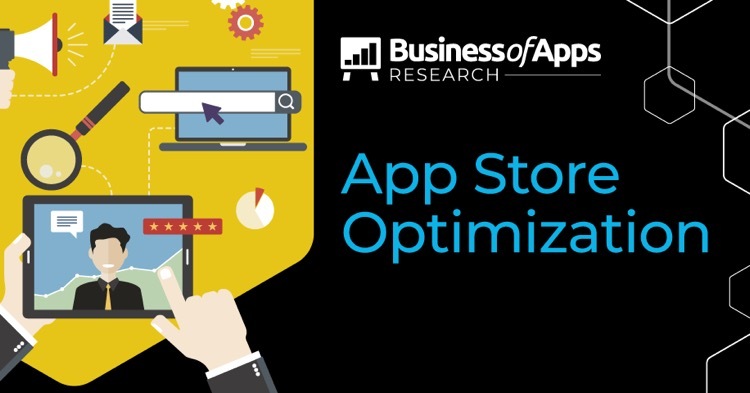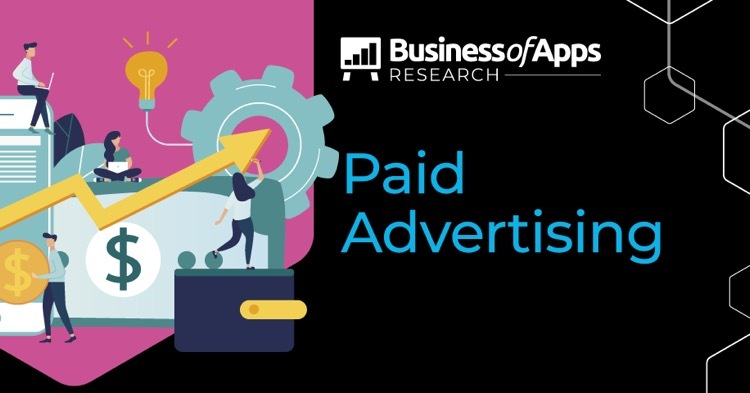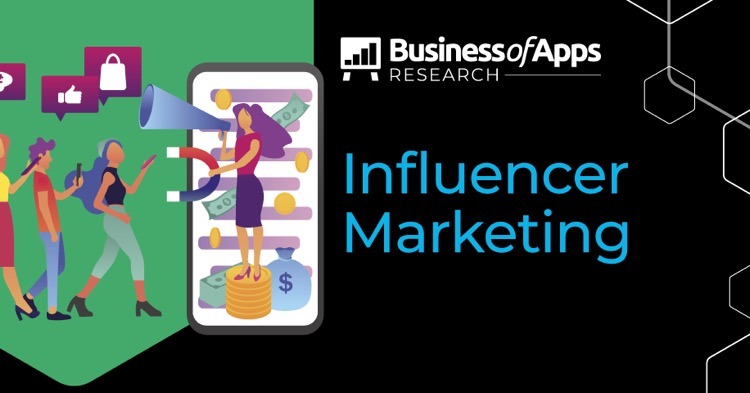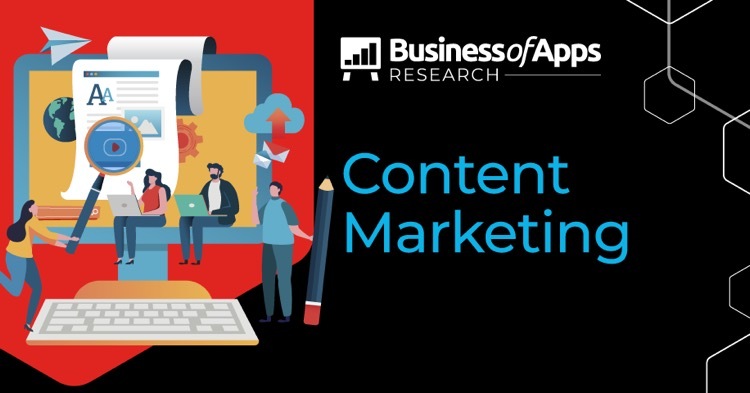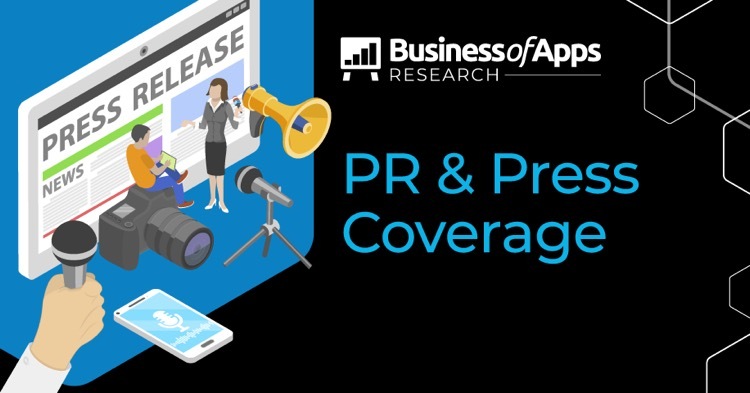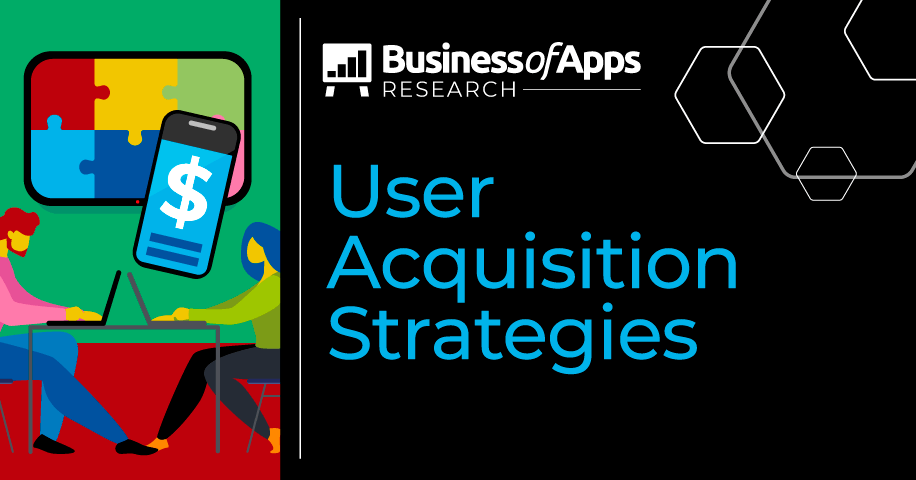
For any app brand to compete and build a sustainable app business, given the high level of competition on major app stores and for people’s attention on their smartphone and tablet screens, it is absolutely paramount to have a robust user acquisition strategy.
The toolbox of app user acquisition strategies consists of two major parts – organic reach and paid advertising. These two are very broad categories that encapsulate a number of strategies that utilize diverse marketing channels to reach potential app users and convert them to actual ones.
Featured User Acquisition Platforms and Agencies
Because whether these strategies are paid or not doesn’t imply their superior efficiency, we don’t prioritize them and mix both freely.
First up is one of the first app user acquisition strategies ever conceived – App Store Optimization, aka ASO.
App Store Optimization
A combination of multiple app marketing techniques aimed at increasing a mobile app’s visibility to its target audience is called App Store Optimization, or ASO. This combination consists of:
- a target keyword research
- an app marketing copy components optimization (the name, title, subtitle, short and long description, screenshots, and preview video)
- an app’s reputation management via continuous efforts to address any issues raised in reviews on the App Store and Google Play store. Such management also involves efforts to increase the number of positive reviews via various means such as in-app messages, messaging on the app’s website, and via its social media channels.
- an ongoing A/B testing to identify the winning combination of app marketing copy creatives
According to multiple research, 65-75% of all installs are generated via app store built-in search. Contrary to paid advertising, App Store Optimization doesn’t involve funding, unless an ASO agency hiring or ASO tool account purchasing is involved. Hence we can attribute ASO to organic reach user acquisition strategy. Conducting a coordinated well-thought-out long-term App Store Optimization campaign allows app brands to save on marketing budgets that otherwise would be spent on paid advertising and drive the app’s user base constant growth. ASO campaign is also capable to inform running a paid advertising campaign via Apple’s Search Ads.
Category Leaders Choose the Right Growth Agency
Join leading brands like Google, Reddit, and Uber in taking the next step towards success using Moburst, where surpassing goals is just the beginning.
Learn more >Aside from ASO techniques clustered around optimizing a mobile app marketing copy, there is another one that often gets overlooked – Web-To-App banners. These are banners app marketers can place on a mobile app’s website to lead the site visitors directly to the App Store to install the app.
From ASO to Paid advertising that often goes hand in hand with App Store Optimization to grow the mobile app’s user base fast and compensate for app users’ churn.
User Acquisition Buyer's Guide
Download our User Acquisition Buyer’s Guide to get a full list of the best service providers on the market to choose from. The guide also covers what is a user acquisition company and how to choose the right one.
Paid Advertising
Paid advertising is an umbrella marketing strategy that implies running paid app user acquisition campaigns run via various channels. These channels are:
- Apple’s Search Ads paid advertising platform
- Google Universal App Campaigns run via Google Ads paid ads platform
- Various mobile ad networks such as Applovin, AdColony, ironSource, and others.
- Launching user acquisition campaigns with social media advertising platforms such as Meta Ads, TikTok Ads, Twitter Ads, Reddit Ads, and others.
As efficient as the App Store Optimization as a user acquisition strategy is, it takes time for this strategy to deliver. On the other hand, with a paid advertising campaign app brands can see an almost immediate impact on their mobile app’s user base growth. To complement ASO with this strategy sustainably, one would need to assess user acquisition costs.
A best practice for running a paid advertising campaign for a mobile app implies having the following components in place – an allocated budget, the mobile app’s user profile, a set of criteria to target a campaign, a set of text and graphical creatives to run several combinations of these simultaneously.
Switching from paid advertising to social media and Influencer marketing. Given its extreme popularity and actually billions of users, social media is the biggest market to reach to acquire users for a mobile app.
Social media & Influencer marketing
An Internet web 2.0 is essentially concentrated around several social media platforms that hold the bulk of Internet users’ attention. Today these are TikTok, Meta (Facebook, Instagram, and WhatsApp), Snapchat, in less degree Twitter, and others. Regardless of controversies and widely covered negative effects on society, social media remains to be the central hub of people’s attention online, and hence its high efficiency for mobile app user acquisition campaigns.
For a mobile app, social media channels serve as a connective tissue between the app and its current and potential users. This is the perfect medium to engage the app’s user base, get feedback to improve the app, and find new users.
Financial-wise, if we don’t factor in employees’ time spent on maintaining social media channels or using third-party tools to manage them, we can attribute social media marketing to the free advertising bucket.
A solid well-thought social media marketing campaign requires thorough planning, crafting text and visuals brand-consistent across all channels, and of course, understanding of what information messaging via social media channels should deliver.
Over the course of the last 7-8 years, Influencer marketing has become mainstream and all major brands are on board with working with influencers to introduce their products and services to their followers. Influencer marketing today is what Celebrity endorsement was in the 50s and onward. Because typically, an influencer marketing campaign requires brands’ cooperation with multiple influencers, influencer marketing companies and platforms come in handy – they serve as a middleman between brands and influencers.
The next essential user acquisition strategy to mention is content marketing.
Content Marketing
With content marketing, app brands can lure potential users for their apps and foster relationships with existing users. It includes blogging on the app’s website, and reaching out to other publications to publish guest posts – the idea in both cases is to demonstrate your expertise in the field and share something that your app’s users will find useful.
When it comes to having a lot of space to talk about the app’s features, discuss potential future updates, and so on, content marketing gives app brand marketers the best option.
Time-wise, content marketing is the most demanding, writing blog posts and articles takes time and effort to do right. There is no blueprint for how these should be written but the common features are – authenticity, insightfulness and, from time to time, a bit of sense of humor is always welcome.
Public relations is coming up, it’s part and parcel of any kind of marketing and hence it should be on the list of user acquisition strategies for app brand marketers.
PR & Press Coverage
Getting a mobile app covered in multiple online publications allows app marketers to attract the attention of mobile app users who follow tech publications to spot new innovative apps to try. It also increases the chances of the app being picked up by an editorial team in Apple’s App Store or Google Play store from Google.
The moment the app hits the market it’s unknown to its potential users, coverage in media allows the app to get that first audience to be exposed. It needs to be said that getting an app covered in the press does not convert to connecting the app with its user base in masses, it’s only relevant to reaching out population segment that is on the lookout for mobile app innovation in Techcrunch publications alike.
To run a successful mobile app’s PR & press coverage campaign, app marketers need to have a well-written brief about the app that presents its competitive features front and center, as well as collateral graphic and video materials. It also requires reaching out a wide spectrum of online publications to find the ones that will actually provide the coverage.
In the landscape of mobile apps, there are many that aren’t meant to be used by separate users but by a community of users, hence the community-building app user acquisition strategy is next up


